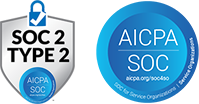What Is Conflict of Interest?
A Conflict of Interest occurs when an individual’s personal, financial, or relational interests have the potential to influence—or appear to influence—their judgment, decisions, or actions in a professional role. Examples include awarding contracts to a relative’s company, investing in competitors while serving on a vendor selection committee, or hiring friends without transparent processes.
Why Conflict of Interest Matters
Unchecked conflicts undermine trust, distort decisions, and expose organizations to legal and reputational risk. Employees may favor personal gain over organizational objectives, leading to wasted resources, compliance breaches, and erosion of stakeholder confidence. Proactively managing conflicts preserves integrity and safeguards fair treatment for all parties.
Where Conflict of Interest Occurs
- Recruiting & Promotions: Favoring friends or family in hiring or advancement.
- Vendor & Procurement: Steering business to suppliers where one holds a financial stake.
- Performance Reviews: Evaluating direct reports with whom managers have close personal ties.
- Governance & Oversight: Board members voting on matters that benefit their own investments.
- Project Assignments: Allocating budget or resources to teams led by allies without merit-based criteria.
Conflict of Interest Key Benefits
- Enhanced Transparency: Clear disclosures and recusal policies build stakeholder trust.
- Risk Mitigation: Early identification prevents regulatory penalties, lawsuits, and financial loss.
- Fair Decision-Making: Objective criteria ensure selections and evaluations serve organizational goals.
- Stronger Culture: Demonstrating ethical standards boosts morale and attracts principled talent.
- Data Integrity: Reliable people-analytics insights depend on unbiased data collection and analysis.
Best Practices & Examples
- Comprehensive Policy: Define what constitutes a conflict, disclosure timelines, and approval workflows.
- Mandatory Disclosure: Require all employees to report relationships or interests that could affect decisions.
- Recusal Procedures: Institute clear steps for stepping aside from decisions where conflicts exist.
- Third-Party Oversight: Use independent committees or external audits to review high-risk transactions.
- Regular Training: Educate staff on recognizing and reporting conflicts, reinforced through case-study exercises.
Example:
A pharmaceutical firm mandates that any researcher with stock in a partner company discloses holdings and transfers clinical-trial oversight to an unbiased team, preserving study integrity and compliance.
Conclusion
Effective Conflict of Interest management transforms potential ethical pitfalls into structured, transparent processes. By codifying policies, enforcing disclosures, and embedding independent reviews, organizations uphold integrity, protect reputation, and ensure that every decision aligns with corporate values—fostering a culture of accountability and trust.
Conflict of Interest FAQs
Q: What is conflict of interest with examples?
A Conflict of Interest happens when personal gains may sway professional decisions. Examples: awarding a contract to a vendor you partly own, evaluating a family member’s performance, or investing in a competitor while setting its contract terms—risks bias and erode trust.
Q: What is a conflict of interest in the workplace?
In the workplace, a conflict of interest arises when an employee’s personal relationships, financial interests, or external roles could improperly influence their duties—such as a hiring manager interviewing a friend or receiving gifts from potential suppliers.
Q: Why is it called conflict of interest?
It’s called a Conflict of Interest because two interests—personal and professional—clash. The individual’s private benefit conflicts with their obligation to the organization, potentially compromising impartial decision-making and ethical standards.
Q: What are the four types of conflict of interest?
Four common types:
- Financial: Direct or indirect monetary stakes.
- Relational: Family or close personal relationships.
- Organizational: Dual roles or allegiances to another group.
- Informational: Access to privileged data used for personal advantage.




